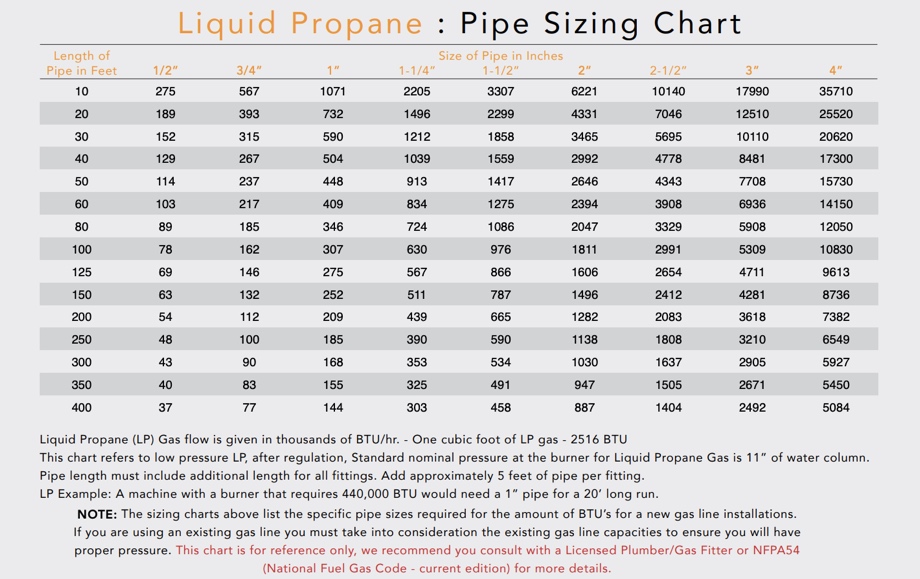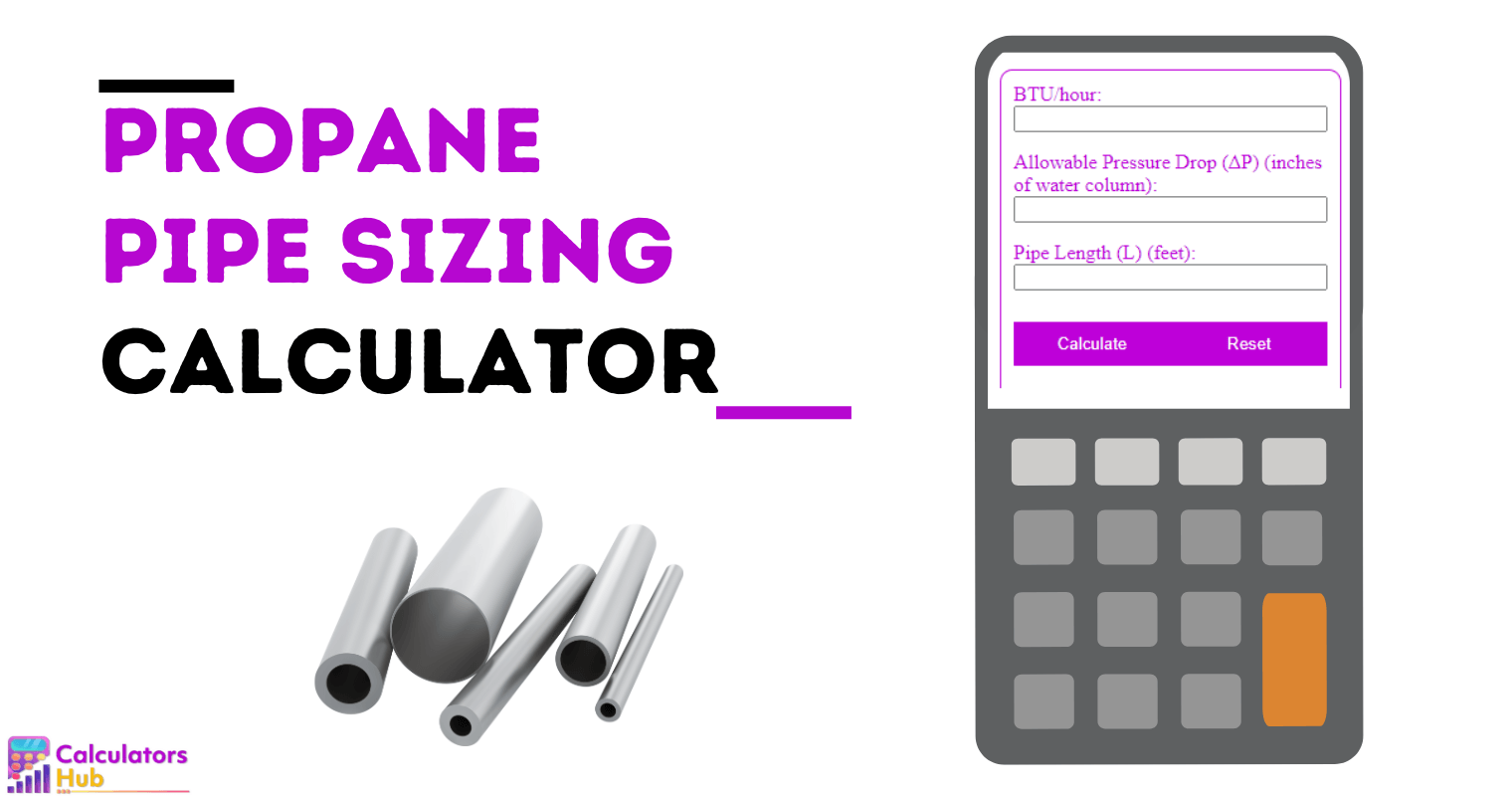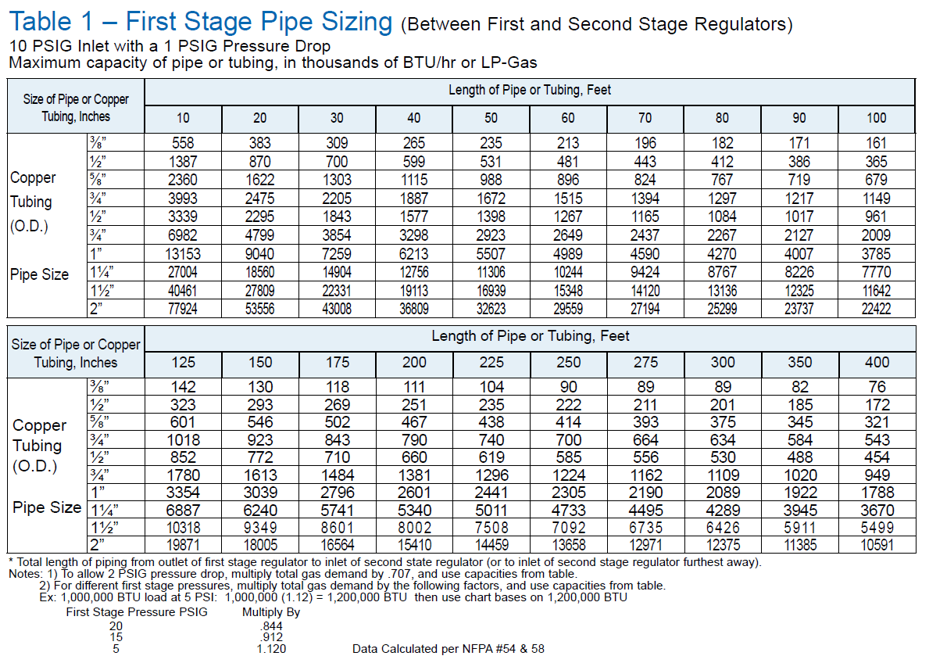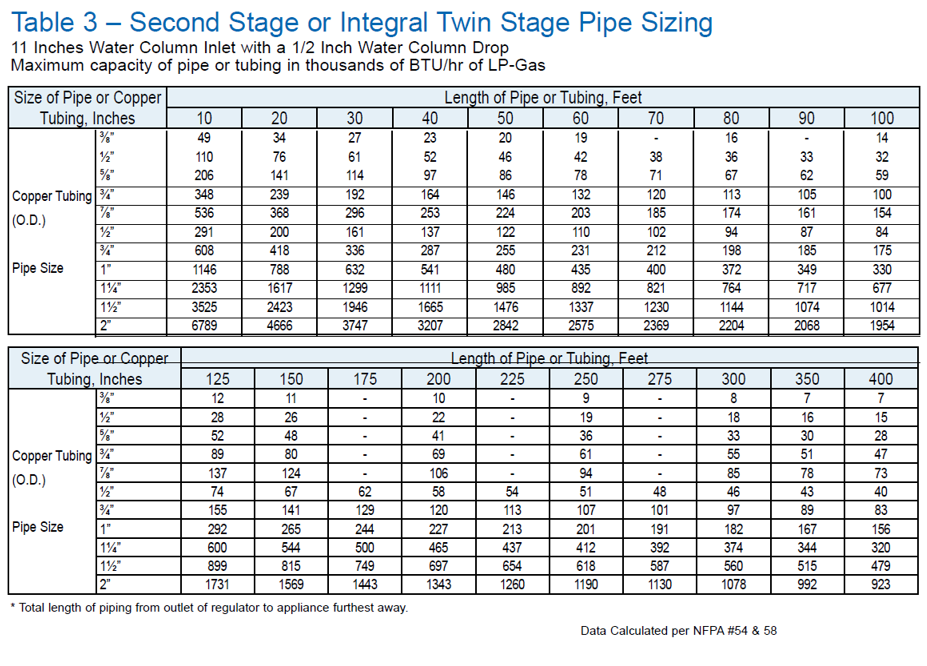Gas Pipe Sizing Chart For Propane

One chilly evening, you turn up the thermostat, expecting a cozy warmth to envelop your home. Instead, the furnace sputters, coughs, and then... silence. No heat. A frustrating scenario, but before you call a professional, let's walk through some basic troubleshooting steps you can safely perform.
Understanding Your Propane System: A Simplified Overview
Your propane furnace is a complex system, but essentially it works like this: propane is delivered from a tank, through pipes, to your furnace. Inside, it's mixed with air and ignited, producing heat. That heat warms air, which is then circulated through your home via ducts. Any issue along this chain can lead to furnace failure.
Safety First! Important Precautions
Before you even think about touching anything, prioritize safety:
- Smell for Propane: If you smell propane, IMMEDIATELY leave your house and call your propane supplier or fire department from a safe distance. Do not use any electrical devices, including phones, inside the house.
- Turn Off the Gas: If you don't smell gas but are still concerned, locate the main propane shut-off valve near your tank and turn it off.
- Disconnect Power: Locate the circuit breaker for your furnace and turn it off. This is crucial, especially if you suspect electrical issues.
- Wait: If you've turned off the gas, wait at least 15 minutes before attempting any troubleshooting to allow any accumulated gas to dissipate.
Remember: If at any point you feel uncomfortable or unsure, STOP and call a qualified HVAC technician. Working with propane and electricity can be dangerous.
Step-by-Step Troubleshooting Guide
Step 1: Basic Checks – The Obvious First
Often, the problem is something simple. Let's start with the easiest checks:
- Thermostat Settings: Is the thermostat set to "Heat"? Is the temperature set higher than the current room temperature? Sounds obvious, but double-check! Make sure the batteries in your thermostat are fresh if it's battery-powered.
- Circuit Breaker: Check the circuit breaker for the furnace (which you should have already turned off and on again) to ensure it hasn't tripped. If it trips immediately again when you turn it on, there's likely an electrical short, and you need a professional.
- Emergency Shut-Off Switch: Many furnaces have an emergency shut-off switch, often located near the furnace itself or at the top of the basement stairs. Ensure it's in the "On" position.
- Propane Tank Level: Seems basic, but is there enough propane in the tank? Call your propane supplier to check your tank level and schedule a refill if needed.
- Check Gas Valves: Ensure the gas valve at the tank is fully open, and that any other valves along the gas line to the furnace are also open.
Step 2: Inspecting the Furnace – A Visual Examination
Now, let's take a closer look at the furnace itself. Remember to disconnect the power at the circuit breaker before proceeding!
- Air Filter: A clogged air filter is a common culprit for furnace problems. A dirty filter restricts airflow, causing the furnace to overheat and shut down. Replace it with a new filter of the correct size and type. This is a maintenance item you should do regularly (every 1-3 months, depending on usage and filter type).
- Pilot Light (Older Furnaces): If you have an older furnace with a pilot light, check if it's lit. If it's out, follow the manufacturer's instructions to relight it. These instructions are usually located on a sticker near the pilot light assembly. If you smell gas while trying to relight the pilot light, STOP immediately and call a professional!
- Blower Motor: Visually inspect the blower motor. Is it dusty or obstructed? Clear away any visible debris. Do not attempt to clean or lubricate the motor itself unless you are very confident in your ability to do so and understand the specific motor requirements. Improper lubrication can damage the motor.
- Flame Sensor (Newer Furnaces): Newer furnaces use a flame sensor to detect if the burner is lit. If the sensor is dirty, it may not detect the flame, causing the furnace to shut down. The flame sensor is usually a small, thin metal rod located near the burner. You can try cleaning it gently with fine steel wool or sandpaper. Be very careful not to damage the sensor.
Step 3: Checking the Gas Line (Proceed with Extreme Caution!)
This step requires extreme caution. If you are not comfortable working with gas lines, DO NOT PROCEED. Call a qualified HVAC technician.
Even if you've already checked the gas valves at the tank, there could be an issue with the gas line itself. This is where the *Gas Pipe Sizing Chart for Propane* becomes relevant, but primarily for professionals.
What is a Gas Pipe Sizing Chart? A gas pipe sizing chart is a table that shows the appropriate diameter of gas pipe needed to deliver a specific amount of gas (measured in BTU/hr – British Thermal Units per hour) over a certain distance, considering the specific gravity of the gas (propane has a specific gravity). This ensures adequate gas flow to the appliance. Undersized pipes can lead to appliance malfunction and even dangerous situations. Overly large pipes are just a waste of money and space.
Why Professionals Use It: Technicians use these charts during installation or when modifying gas lines. They calculate the total BTU/hr demand of all gas appliances connected to a line, measure the length of the pipe runs, and then consult the chart to determine the correct pipe size. This ensures that each appliance receives the required gas pressure.
What You Can (Safely) Check:
- Visible Damage: Carefully inspect the exposed gas lines for any signs of damage, such as dents, kinks, or corrosion. If you find any damage, DO NOT attempt to repair it yourself. Call a professional immediately.
- Listen for Leaks: With the gas turned on (only if you previously turned it off, and after waiting at least 15 minutes), listen carefully near the gas lines and fittings for a hissing sound, which could indicate a leak. If you hear a hissing sound, turn off the gas immediately and call a professional!
- Soap Bubble Test (Very Carefully!): Mix a small amount of dish soap with water. Apply the soapy water to the gas line fittings (joints). If bubbles form, there's a gas leak. If you find a leak, turn off the gas immediately and call a professional! Clean off the soapy water after the test.
Do not attempt to tighten any gas line fittings yourself. This requires specialized tools and knowledge to ensure a proper seal. Incorrectly tightened fittings can create leaks.
When to Call a Professional
While some basic troubleshooting is within the realm of a confident homeowner, there are many situations that require the expertise of a qualified HVAC technician. Here's when to call for professional help:
- You smell propane gas. This is an emergency.
- You are uncomfortable working with gas or electricity. Safety should always be your top priority.
- You suspect a gas leak. Even a small leak can be dangerous.
- The circuit breaker trips repeatedly. This indicates an electrical problem that needs to be addressed by a qualified electrician.
- You have a complex furnace issue you can't diagnose. Modern furnaces have sophisticated control systems that require specialized knowledge to troubleshoot.
- You need to repair or replace gas lines. This work requires specific certifications and permits. Gas line repair or modification is NEVER a DIY project.
- The furnace requires extensive repairs, such as replacing the gas valve, burner, or control board. These repairs require specialized tools and knowledge.
- You suspect a problem with the propane tank or regulator. These components should only be serviced by qualified propane professionals.
Preventative Maintenance: Keeping Your Furnace Running Smoothly
The best way to avoid furnace problems is to perform regular preventative maintenance. Here are some tips:
- Change your air filter regularly. As mentioned earlier, a clean air filter is crucial for efficient furnace operation.
- Schedule an annual furnace inspection and tune-up with a qualified HVAC technician. A technician can identify and address potential problems before they become major issues.
- Keep the area around your furnace clean and free of debris. This will help ensure proper airflow and prevent overheating.
- Consider installing a carbon monoxide detector. Carbon monoxide is a colorless, odorless gas that can be deadly. A carbon monoxide detector will alert you to the presence of this gas, giving you time to evacuate the house.
By following these troubleshooting steps and practicing preventative maintenance, you can help keep your propane furnace running smoothly and efficiently for years to come. And remember, when in doubt, call a professional! Your safety and peace of mind are worth it.










